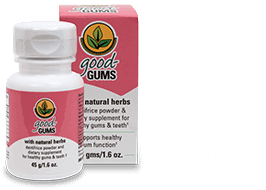How Nutrition Affects Your Teeth and Gums
“Let thy food be thy medicine and thy medicine be thy food.” –Hippocrates in 431 B.C.
The most important long-term factor affecting the health of teeth and gums is nutrition, from the womb onward. If we and our parents had spent our lives eating as our ancient ancestors did, we also would have had the healthy teeth (and by implication, gums) that anthropologists have found to be the hallmark of native societies that were untouched by “civilized” diets. And that’s without their having practiced tooth brushing or flossing. In contrast, modern, western, industrialized societies give us on average 35 times more dental caries and a correspondingly high incidence of gum disease. And that’s even after tooth brushing has become almost universal, and flossing fairly widespread.
What went wrong? Primitive human societies had learned to identify which organisms, which parts of them, and which ways of preparing them provided the most nourishment, and carefully passed that wisdom down generation by generation in the form of traditional dietary customs. Monoculture agriculture started to erode that wisdom, but it was completely swept away when the industrial revolution came to the farm. The two primary measures of industrialism were applied to our food production: the quantity of product produced per man-hour and the profit produced per year. Quantity has grown tremendously; labor requirements and costs have gone down; profits for food manufacturers (though not farmers) have soared. But as a consequence the nutrition per acre and nutrition per person (particularly those aspects of nutrition involved in cell growth and cell repair in addition to fueling the body) have suffered.
The foods that people have eaten for thousands of generations have been displaced in less than a century by imitations that are cheaper to make and more convenient to use, but less healthful. It’s become really hard for most people in the cities of America to eat a totally primitive diet.
- Even if we determine to eat only whole grains, our grains usually aren’t dried at low temperatures to preserve their enzymes, sprouted before grinding, and then ground just before we cook or bake with them.
- Most produce is neither picked the same day it’s eaten nor grown in rich soil that’s chemical and fertilizer-free.
- Most eggs aren’t laid by chickens who spend their days soaking up sunshine and generating vitamin D as they forage for grubs outdoors.
- Most readily available milk and cheeses are processed by heat so that the pathogen-destroying, immune-system-boosting and vitamin-enhancing properties are destroyed in the quest for a long shelf life.
- The land-animals that are sources of fat soluble vitamins, minerals and activators hadn’t spent their lives foraging outdoors on a variety of organic grasses that were themselves growing in mineral-rich and enzyme-rich soils.
- It’s easier to find fish filets than fish heads and livers; steaks of muscle meat are more available than the organ meat and fat tissue that the “primitives” preferred as being more nourishing.
- Most of our plant foods aren’t lacto-fermented prior to eating.
Even though our diets aren’t ideally in line with the diets of our ancient ancestors, we don’t have to give in to all the ills that arise from the modern diet. That’s especially true for teeth and gum health.
The cells in the mouth area have some of the fastest turnover rates in the body. Located in a bacteria-laden environment that is close to the teeth and jawbone (and not to mention close to the sterile brain), the oral cells wear themselves out and have to re-grow at a very fast pace in order to heal quickly and to marshal the resources of the immune system to keep nearby organs free of bacteria. Often a whole new group of oral cells is replaced within three to seven days. Beneath the gums, the tooth-supporting alveolar bone also renews itself (in a process called resorption and remodeling) faster than any of the other bones in the body. Because the cells of the mouth don’t last as long, factors that affect cell growth (like nutrition or bacterial infection) tend to show up fairly quickly here.
Gum problems and tooth decay are essentially due to bacterial infection. While our primitive ancestors rarely had to worry about that problem, we need a little help in the form of oral hygiene and the use of a gum-health-supporting remedy, especially one that supports the growth of new healthy gum cells and, if possible, one that’s all natural.
Over the eons, humanity has always had an affinity with naturally-occurring plants and minerals, and so tends to have a greater tolerance for and responsiveness toward natural substances than for exotic, synthetic chemicals that have never previously been encountered. Good-Gums® consists only of natural ingredients to maximize the effectiveness of home oral care. Vitamin C gives the support necessary for the growth of healthy new gum cells. Acid neutralization helps disrupt plaque’s environment while gentle, herbal anti-microbials inhibit oral pathogens. Soothing herbs bring relief while tender tissues are healing.
Good-Gums® comes as a powder and rapidly dissolves into a liquid in your mouth. It’s the powdered form that allows the ingredients to retain their natural potency. The particle sizes of the ingredients promote rapid dissolving in the mouth’s saliva. It’s as a dissolved liquid that Good-Gums can penetrate better into the crevices and margins between teeth and gums where needed most.
The act of applying Good-Gums® during home oral hygiene concentrates it where it’s needed most, at the margin between teeth and gums, where plaque bacteria are most prevalent. Using the best nutrition currently available to us and with a little help, we too can have a life of healthy gums and teeth.


